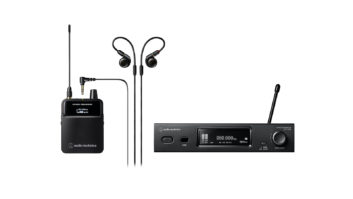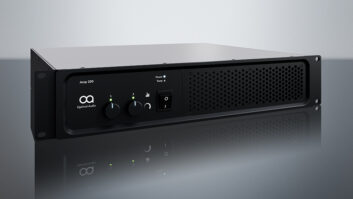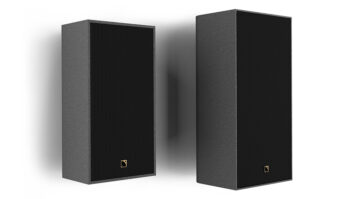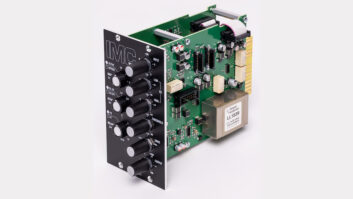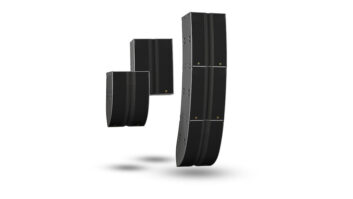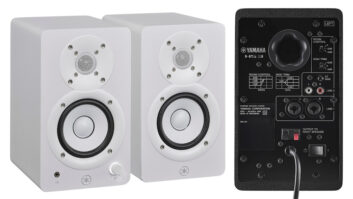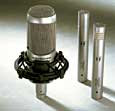
Audio-Technica’s 30 Series condenser mics offer extended frequency
response, high-SPL handling, excellent dynamic range and low self-noise—at an
affordable price. The newest additions to the line are the
large-diaphragm AT3035 cardioid ($349) and the small-diaphragm AT3031
cardioid ($259). A small-diaphragm omni (AT3032) is also available. All
three are fixed-charge backplate, permanently polarized condensers requiring 11 to 52VDC phantom power;
each includes -10dB pad, and 80Hz, -12dB/octave bass roll-off switches.
The AT3035 is a side-address design with a 6.7×2-inch, 13.8-ounce
body and an attractive pewter-look finish. The mic ships with a simple,
yet effective shock-mount that holds the body securely with a
definitive “click.”
In the studio, the AT3035 proved surprising. Despite its low cost,
the mic was extremely smooth, to the point of being almost ruler flat
from 50 to 15k Hz. If you’re looking for a mic with attitude, weird
vocal bumps or excessive top-end boost, then this one isn’t it.
Instead, the AT3035 puts back a near-identical picture of what’s in
front of it, while providing an impressively low self-noise of 12 dB.
It was ideal for recording a fairly bright 12-string, where mics with a
more “traditional” condenser top end would have yielded a
brittle sound. Recording tenor sax, the opposite was true: Here, I
chose a mic with more edge, while the AT3035 was very nice—smooth
and natural—on alto and soprano sax.
The AT3035 excels on female voices, providing the right blend of
close-in proximity effect for fullness, with a linear HF
response that was never shrill or edgy. On male vocals, the AT3035’s
flat response meant reaching for the EQ to add a slight (2 to 3dB)
presence boost to increase intelligibility. In either case, working in
closer than 6 inches or so, I did need to use a stocking-screen filter,
as the LF roll-off was a bit too much for vocal pops—it’s better
suited for wind noise or general bass filtering, for drum overheads and
the like. Also, the AT3035’s off-axis response was excellent—I
never had to worry about the mic’s character changing when singers
moved around while tracking.
The AT3031 is a small-diaphragm cardioid, in a familiar, probe-style
5.7-inch-long package that’s just over 3/4 inches in diameter. Overall,
the AT3031 exhibits a more typical condenser mic response, with a
gentle +2dB HF rise that kicks in from 9 to 15k Hz, and then levels off
and extends out to 20 kHz. Its unpadded 148dB SPL handling capability
and wide response scream out for percussion applications, and the
AT3031 was spot-on for drum overheads and close-up on hi-hat, yet
retained plenty of LF moxie for near-field recording of a 28-inch
Paiste symphonic gong—the proximity effect combined with the
mic’s sub-40Hz response for a powerful, thundering result.
Next up for the AT4031 was capturing overdubbed harmonic grace notes
on a Taylor acoustic guitar. Here, the extended top end was a real
plus, while the mic’s stated 16dB self-noise (this spec seems very
conservative) combined with the ultraclean sound of an Aphex 1100
preamp revealed some weird clicking noise, which turned out to be the
guitarist’s wristwatch!
Audio-Technica might have made a mistake in categorizing its 30
Series for “home and project studio” use. These are quality
engineering tools that can hold their own in any pro
environment—stage, studio or broadcasting.
Audio-Technica, www.audio-technica.com

